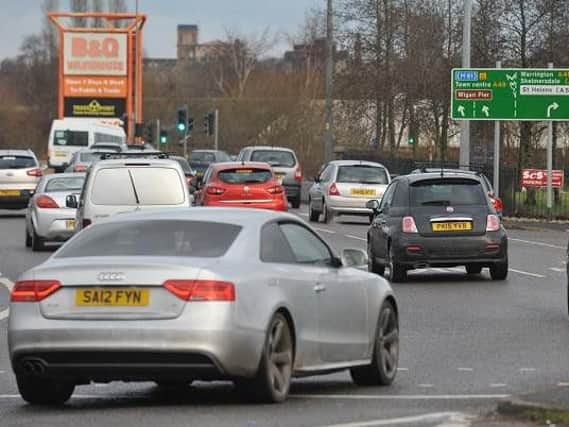Wigan's health hazard hotspots revealed


But the borough, unlike the majority of other Greater Manchester authorities, has escaped censure over its overall air quality.
Other news: Customer hit with a hammer in Wigan Spar
Roadside testing equipment, and modelling exercises by Transport for Greater Manchester, have pinpointed the danger spots in the borough.
Advertisement
Hide AdAdvertisement
Hide AdThese include: The Saddle junction and Marus Bridge crossroads in Wigan, Atherleigh Way, the top of Church Lane in Lowton, the East Lancashire Road near Golborne and Manchester Road in Ince.
Environment officials in Whitehall have served notice on seven other Greater Manchester town halls that have to urgently address their air quality performance by March.
Council bosses in Wigan say they have considered a raft of public measures to curb pollution.
And consideration is being given to converting all of their Leigh Building Services vehicles to run on electric motors, as well as monitoring anti-idling devices on its 267-strong fleet.
Advertisement
Hide AdAdvertisement
Hide AdMark Tilley, the council’s assistant director for infrastructure and regulatory services, said: “While it is good news that our air quality overall is within legal limits, we have still pledged our commitment to take action to improve air quality to ensure our residents aren’t exposed to harmful air pollution.”
Plans include close liaison with both Transport for Greater Manchester and Greater Manchester Combined Authority as part of a low-emission strategy and air quality action plan.
A steering group, including environmental health, planning, public health and transport staff has already been established.
Mr Tilley added: “We are already taking positive action with our staff to improve air quality relating to vehicle emissions, including Smart Working, which encourages our staff to work from home or use the most suitable location and also car sharing and dedicated car share parking bays.
Advertisement
Hide AdAdvertisement
Hide Ad“We have launched Bikeability which has been rolled out in schools and last year saw over 1,300 school children receive cycle training.
“School travel plans have also had a fantastic take-up with 31 schools having adopted the scheme which promotes alternative modes of transport.”
Another 30 businesses and 81 developments have their own travel plans also and taxis have been given a £20 reduction on their licensing fees for using low-emission vehicles and a 50 per cent reduction for electric cars.
A major cycle scheme incorporating The Saddle has also received Department of Transport funding.
Advertisement
Hide AdAdvertisement
Hide AdMr Tilley added: “The hotspots for increased levels of air pollution are on main roads and popular commuter routes and are at peak-travel times.
“Everyone can do their bit to improve air quality and bring the levels down by travelling by bike or walking where possible instead of using the car or by turning their engine off if they are in a vehicle.”
Considerable work has been carried out on the Saddle junction and its surrounding roads in recent years to ease congestion.